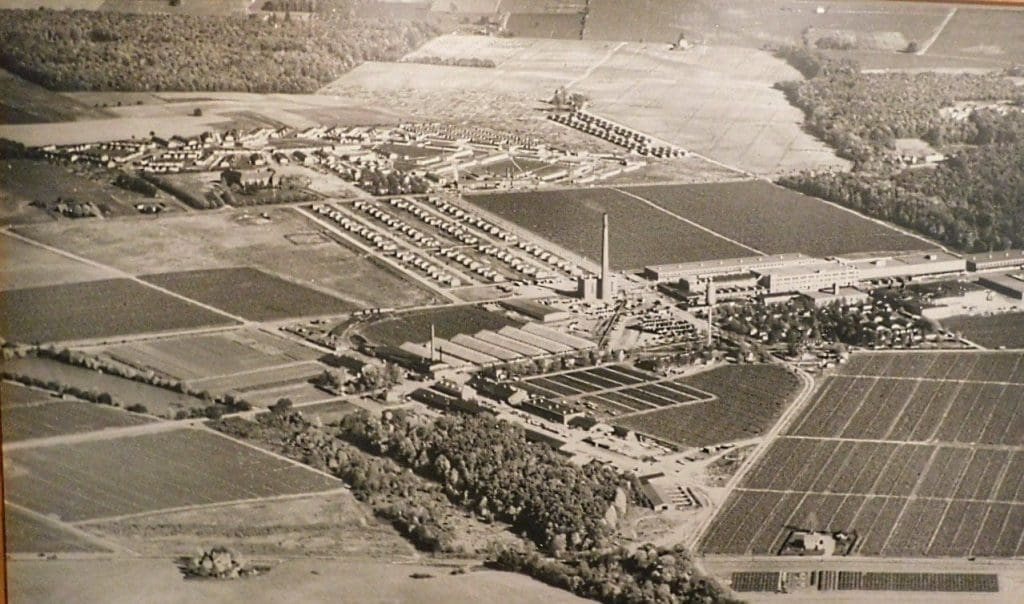What if, one day a representative of the government showed up at your home and gave you hours to pack up all you could carry and all your assets were seized while you were taken to an undisclosed location? Is this the beginning of a Kafka novel or a dystopian nightmare?
A Day That Will Live in Infamy
On December 8, 1941 the United States of America declared war on the Empire of Japan after the attack on Pearl Harbor. In February of 1942, President Franklin Roosevelt signed Executive Order 9066 and, with a stroke of his pen sent over 120,000 Japanese American citizens to internment camps in California, Texas, Arizona, Wyoming, Colorado, Utah and Arkansas. These military-style camps held American citizens until 1945, when they were finally closed. This shameful period in US history has been written about more in recent years as stories come out from survivors and descendants of these camps. But down in a quiet corner of Southern New Jersey, there’s a story about a village that grew from the ashes of this nightmare – a place where people of all different backgrounds could forge a community and a home after the losses of war.
The Early Days
Arthur P. Seabrook bought a 57-acre farm in Cumberland County in 1893. He raised vegetables and sold them out of his truck. His son, Charles Franklin (known as C.F.) wanted to be an engineer, not a farmer. In 1907 at age fourteen, C.F. designed a portable irrigation system for the farm based on a Danish design, and brought irrigation into farming life in NJ and increased production by 300 percent. In 1911 C.F. made a major life decision and bought the farm from his father and began the journey that would lead him to create not only what Life Magazine would later call “The Biggest Vegetable Factory on Earth,” but, more importantly, a community and an opportunity for thousands of displaced persons to find a home in a post-war world.
Increasing Production and Applying Innovation
C.F. was not a philanthropist. He was, first and foremost, a businessman. Everything he did was to benefit the farm and increase production and profits. By 1920 he had increased the farm to over 20,000 acres; in the growing season (March – November) he could plant five crops on each plot per year. He saw to it that thirty-five miles of road were built so he could truck his produce to market, this later became Route 77. He constructed food processing plants, power plants, warehouses, dams, pumping stations, railroad connections and cold storage units. He built a massive infrastructure to support his growing farm operation. But the most important deal C.F. made was his 1930 purchase of the patent to quick freeze food from Clarence Birdseye – this was the deal that would later make Seabrook Farms the major supplier of vegetables to the military and an important economic factor in Southern New Jersey.
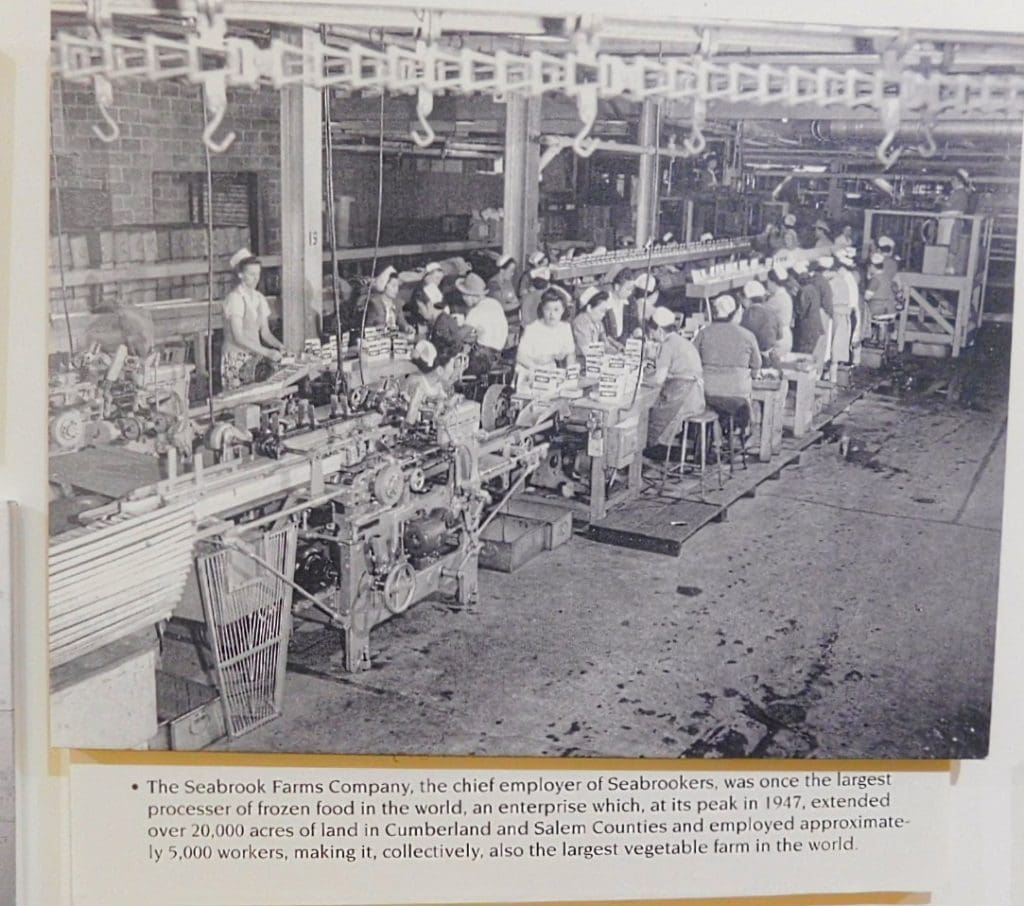
The War Effort Impacts Labor Supply at Home
In 1944 C.F. had a problem. He faced a labor shortage due to World War 2 and the military effort required from the civilians at home. While visiting with Quakers in Philadelphia, it was suggested to C.F. that he look at employing interned Japanese Americans. The Quakers were strong supporters of the Japanese during this period and offered assistance to many at the camps with securing jobs and education. During World War 1 Seabrook Farms had employed not only migrants from the South, but also Italians and Russians fleeing conflict, so this idea was not as unusual as it may have sounded initially. C.F. worked with the War Relocation Authority (WRA) and recruited his first 300 “trial” employees from the internment camps in August of 1944; by December of that year, he had 800 and thirty Japanese Americans working for him at Seabrook Farms.
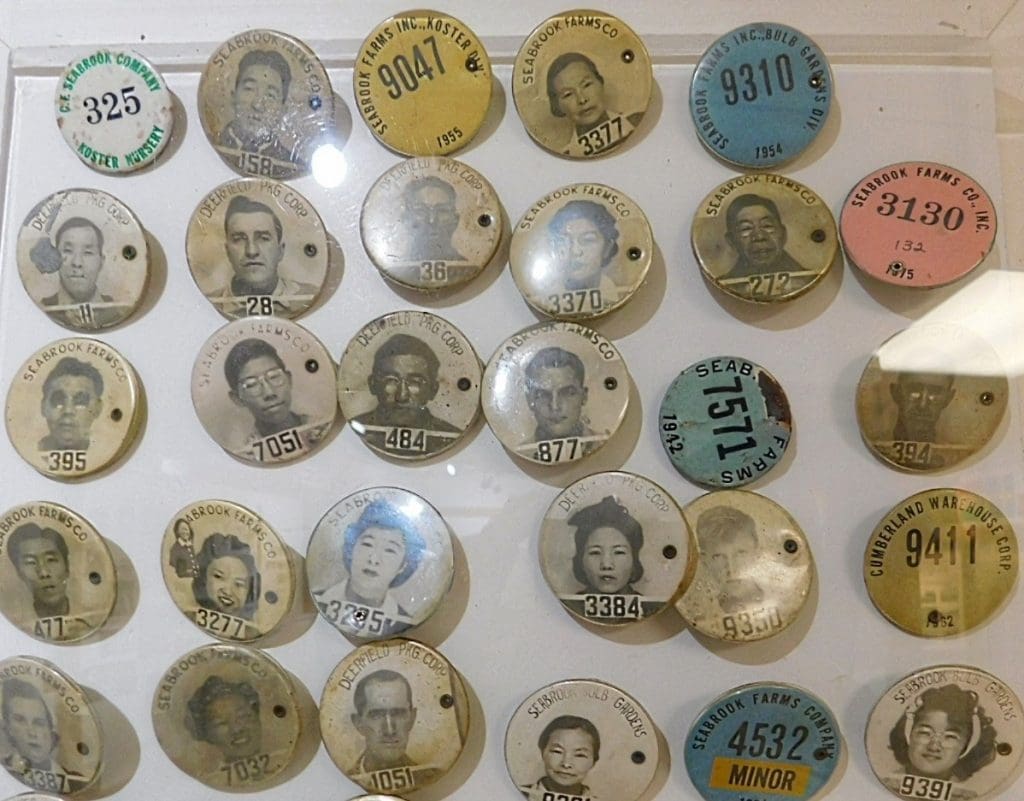
Inviting Internees to South Jersey
Internees who accepted C.F.’s offer were given; $25 each and a one-way bus ticket east. What they got when they arrived was a job at Seabrook Farms working 12-hour shifts with one day off every other week at shift change. What they were also given was an opportunity for families to live together, in their own homes and the opportunity to establish a new community—by 1947, Seabrook Farms had approximately 2,700 Japanese Americans living and working on site. This was the largest concentration of Japanese Americans in the country then; and the largest concentration of any ethnic group working for a single US employer.
By 1947 Seabrook Farm had over 5,000 employees. Not all were Japanese Americans from US internment camps. After the Pearl Harbor attack the US asked Latin American countries to round up their Japanese citizens and approximately 2,200 Peruvian Japanese were sent to camps in the US. After World War 2, Peru said they should be sent back to Japan. These people were not only homeless – they were stateless. Seabrook Farms provided jobs and homes for relocated not only Japanese Americans, Japanese Peruvians, migrant laborers from the Deep South, Appalachia and the Caribbean, German POWs but also many displaced by the War in Europe.
Refugees Arrive from Europe
Eevi Trummees arrived at Seabrook Farms in September of 1952. She was 18 and had graduated High School when she arrived on a warship. Eevie told me she had expected to see lions, Indians and cowboys when she first saw America – the stuff of movies. Eevie’s life had been no Hollywood story up to this point. Born in Estonia, she had lived through Soviet and German occupations of her beloved country. She had lived in Czechoslovakia and seen more than a child should have to see before she left Europe. At age eight, she learned how to throw a hand grenade as part of the curriculum at her German school. After World War 2 she walked 150 miles to the American Zone of the occupied territories; her father had been murdered by the Soviets, so the family feared being picked up and sent back. Eevie and her family spent seven years in a displaced persons camp before they heard about Seabrook Farms.
Over 600 Estonians came to live and work at Seabrook Farms. The “Seabrookers” lived in ethnic enclaves. They maintained their cultural traditions while working together in an integrated, mixed community. Larry Ericksen, Executive Director of the Seabrook Education and Cultural Center, described it as “not a melting pot, but a mosaic” of mankind, many different ethnicities – together yet distinct, maintaining tradition. In total, Seabrook Farms was home for people from twenty-five countries, thirty-two ethnicities and 30 languages. So, it wasn’t surprising that the Seabrookers were offered English classes, bilingual supervisors and employee newsletters published in multiple languages.
Growing up a Seabrooker
Masaru Nakawatase (Mas) was born in the Poston War Relocation Center, 200 miles west of Phoenix, Arizona inside an Indian Reservation in 1943. His parents met in the camp; his grandfather was taken by the F.B.I. with no explanation. His family came to Seabrook Farms in 1947. Mas’ family was able to take advantage of the Seabrook Childcare Center built in 1944. Funded by the Migrant Division of the State Department of Labor, and available if both parents were working. The Seabrook School was founded in 1923 and taught grades k- 8. The school was integrated from inception. Seabrook kids went to local Bridgeton High School. In 1962, 20 percent of the student body still came from Seabrook. It’s also notable that six out of the ten that year that graduated with distinction were Seabrookers.
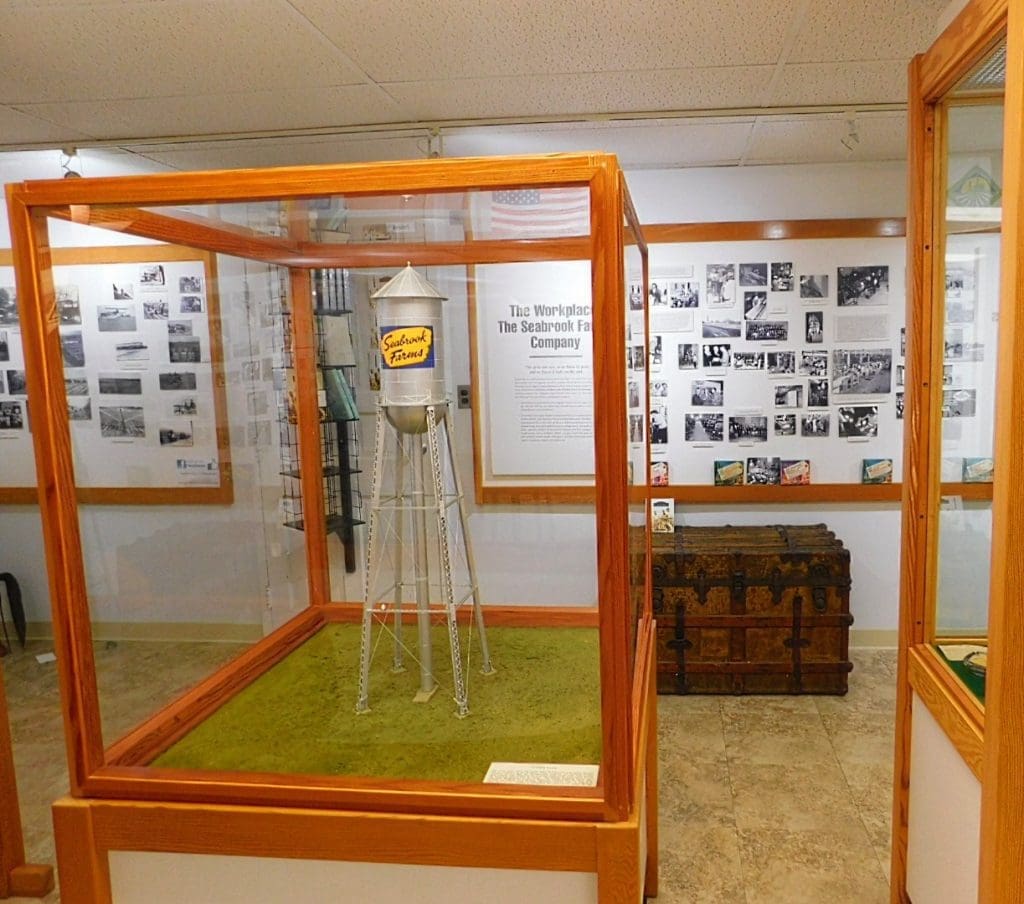
Mas, now approaching 80, has fond memories of Seabrook. As an adult, he sees it for what it was – not Utopia, but certainly “home.” He says it was a great place to grow up. There was a close-knit community and he always felt secure. Seabrook has been referred to as “a global bootstrap village.” Mas felt like he was truly raised by a village and has fond memories of his childhood friends and High School days. He said his parents rarely talked about the negatives or the past, so the family was focused on the future. For Mas’ family after years of incarceration, the ability to eat what you wanted and cook your own food was a huge step up from the military-style meals at the camps.
Eevie also had nothing but fond memories of her time at Seabrook Farms. She too felt it was a wonderful place to grow up. She worked summers at Seabrook Farms and was able to attend college in Philadelphia. Eevie said Seabrook gave her a new beginning. About 950 Estonians came to Seabrook Farms and about 600 stayed. Like Eevie, many became citizens and while they still have great love from their Estonian homeland and traditions, the love and passion they feel for their adopted homeland is very powerful.
Making an Impact on the Surrounding Community
What was it like for these people that looked and sounded so different in rural South Jersey in the 40’s and 50’s when the propaganda machine of the US was churning out anti-Japanese rhetoric – when even Disney cartoons warned of the “yellow-peril”? Nearby Bridgeton had been called the “capital of the confederacy” in these parts more than once. C.F was a bit of a marketing genius. Twice in 1950, he arranged to pay his workers in silver dollars, known then as cartwheels. In what became known as the Cavalcade of Cartwheels, he had NJ State Troopers truck in $150,000 in silver dollars to make the payroll twice in June. If the local merchants and citizens needed reminding of the economic impact of Seabrook Farms, and the prosperity it brought to the region, these silver dollars were an obvious visual prop reminding them every time someone paid for their purchase.
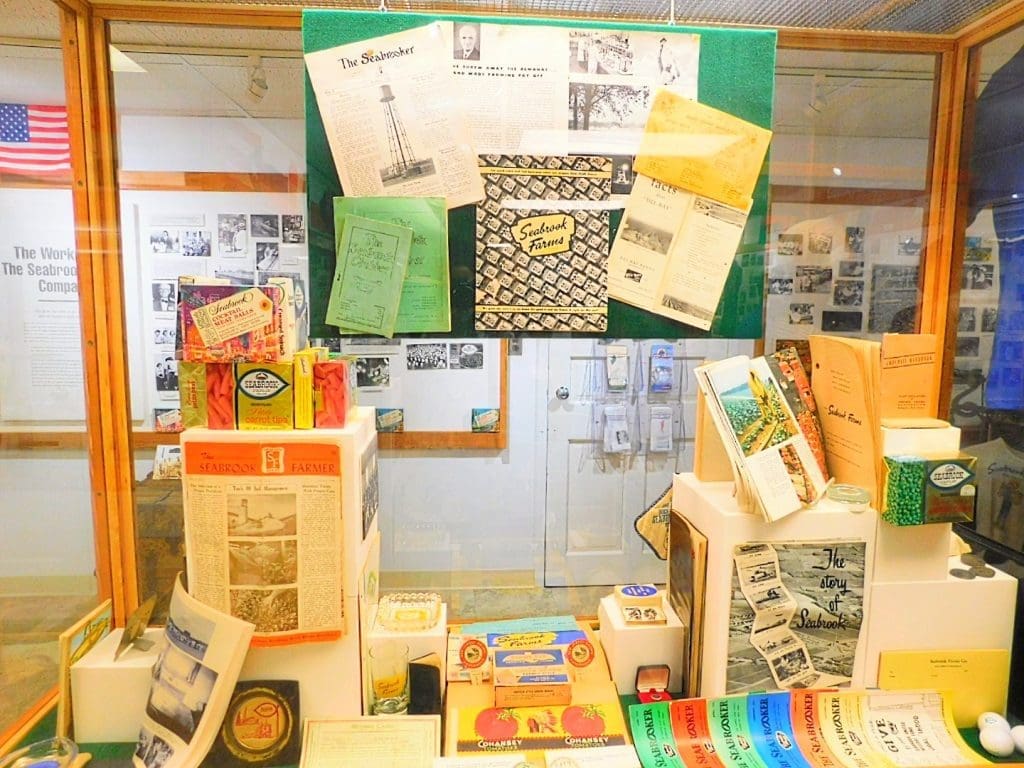
Feeding the Nation
Seabrook Farms was a major supplier of vegetables to the military and a major force when the war ended. At its peak the farm produced 150 labels of frozen foods. Over ninety million pounds of fruits and vegetables came from Seabrook Farms annually at the height of production, which equated to 15 percent of the country’s entire frozen food needs at the time. Seabrook Farms had four subdivisions; Seabrook Farming Corporation (growing), Deerfield Packing Company (processing and quick freeze), Cumberland Warehouse Corporation (refrigerated storage) and Cumberland Auto and Trucking (transport). Seabrook Farms even started their own climatology division for soil analysis. There’s no question that Seabrook Farms was a major player in the food industry while employing a rainbow of humanity in rural Cumberland County.
Captive Labor or Community Savior?
Was it a perfect global village? No. Was C.F. a savior or an exploiter? Maybe a little bit of both – like most capitalists running a corporation, he was a businessman. Women were paid five cents less than men for the exact same work. Children aged twelve and up were expected to work in the fields during school breaks. The company owned the store. Rutgers University did a deeper dive on capitalism vs. captive labor in a digital exhibition that is available online and highly recommended for a balanced view. Seabrook Farms wasn’t paradise, but compared to what many of the families had endured on the journey to Seabrook – it sure looked better than many of the alternatives. In 1947, when the opportunity arose, 126 Japanese attained US citizenship at Seabrook Farms in the largest group ever granted citizenship in a single ceremony to date. Like the Estonians, many Japanese Americans remained in the area after they stopped being Seabrookers.
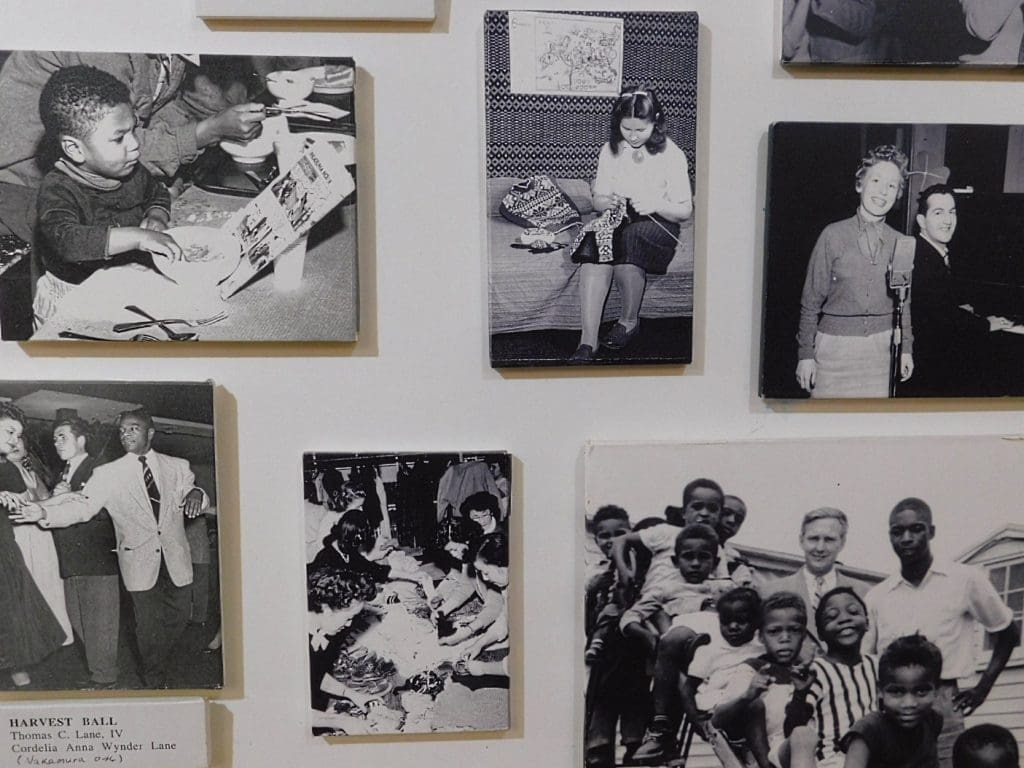
Making Reparations
In 1959 C.F. sold out to Seeman Brothers and Sons. The thriving community of Seabrook Farms came to an end as farming became more mechanized and South Jersey began to change. In 1988 the Civil Liberties Act of 1988 made reparations of $20,000 each to every surviving internee with payments beginning in 1990. The legislation states that the government actions were based on “race prejudice, war hysteria and failure of political leadership” as opposed to legitimate security reasons. In total $1.6 billion dollars have been paid out.
Remembering a Global Community and Educating Future Generations
The story could have ended with the reparations payout, another forgotten page in the history books (depending which state you live in.) In 1994, after a reunion of Seabrookers an idea was born – The Seabrook Education and Cultural Center, Inc. Their mission is “to preserve and make known the unique history of Seabrook, New Jersey in Upper Deerfield Township, Cumberland County as a place where people of different races and cultural heritage were given an opportunity to start a new life.” The Center contains donated photographs, records and memorabilia from members of the Seabrook Community. It is a living museum of the inhabitants’ work and personal lives. There are small dioramas of the farm, Boy Scout and Girl Scout uniforms, factory identification badges and the stuff of everyday lives displayed to encourage understanding of the times and the lives lived in this global community. The museum is open Mon. – Thurs., from 9 a.m. – 12 p.m. It is staffed by volunteers so I highly recommend calling before showing up. The Center is located in the lower portion of the Upper Deerfield Township Municipal Building.

What Remains
There are remnants of the farm complex scattered around the surrounding area. The Buddhist Temple built in 1945, remains and is still very active; as is the Estonian Church, built in 1949.
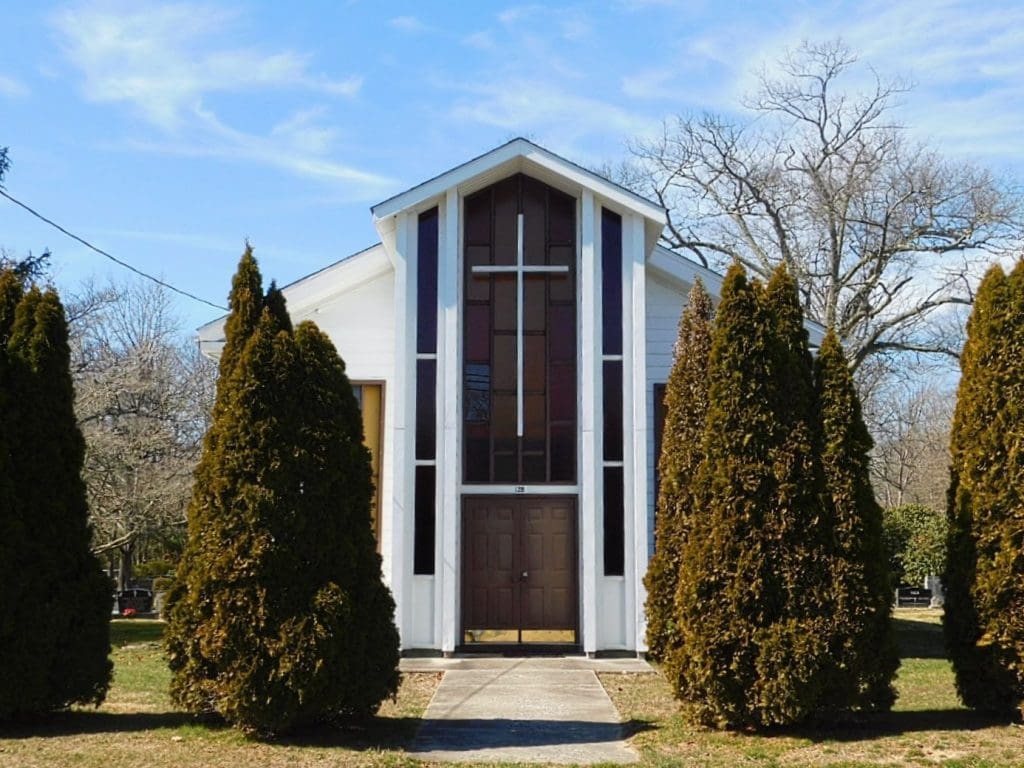
You can see remnants of the “Hoover Village” around the old plant if you look closely at the converted houses in the area. However, the most moving reminders of this time in history are still the oral stories. To listen to Eevie or Mas talk about life on the farm, about time spent with friends, or happy childhood memories like any American kid – this is really the story of Seabrook Farms. It wasn’t a perfect place – but it was what every human being should be given – an opportunity for a chance at a brighter future for oneself and one’s descendants.
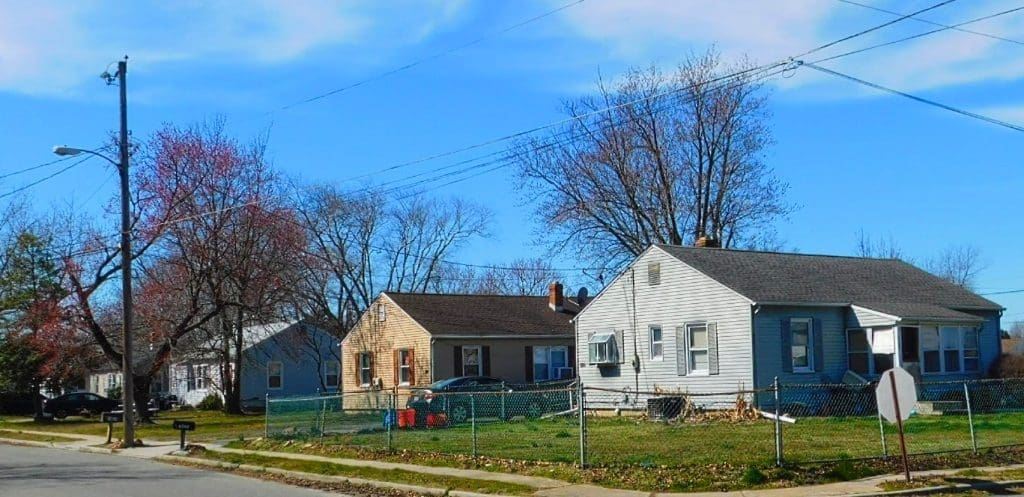
Sue graduated from Rutgers University with a B.A. in English back when you could still get a degree for reading great literature. She spent nearly 40 years working in the Sales & Marketing field with companies ranging from non-profits to small businesses to Fortune 100 Corporations. Most recently retired after nearly 20 years with S & P Global, she is now free to pursue her true passions for hiking, writing and photography. Sue was born and raised in New York State. As a New Jersey transplant, her passion for the special blend of culture and nature that is uniquely Jersey is what Sue loves to share with the world. She has one grown son that she is insanely proud of. Her husband of many decades is an amazing partner both in life and hiking. When not out exploring, Sue is most likely at home reading a novel with her dog.
- Sue Fajgierhttps://thedigestonline.com/author/sfajgier/
- Sue Fajgierhttps://thedigestonline.com/author/sfajgier/
- Sue Fajgierhttps://thedigestonline.com/author/sfajgier/
- Sue Fajgierhttps://thedigestonline.com/author/sfajgier/


